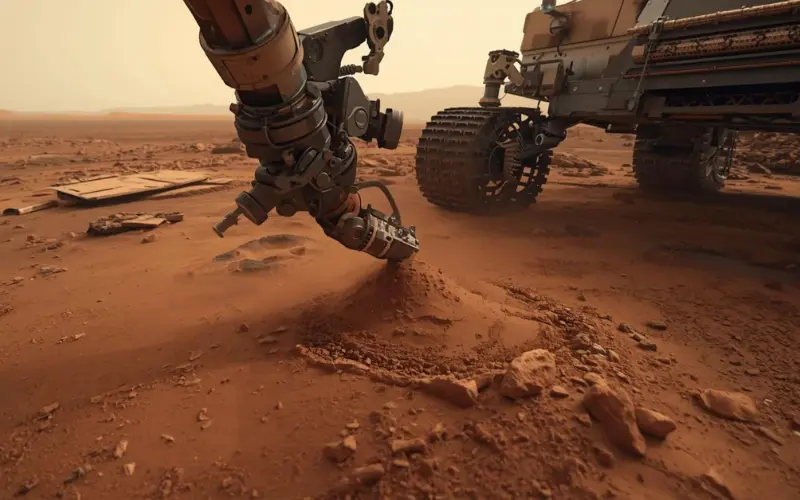

Welcome, dear readers, to Part 6 of Advancing Resource Extraction Methodologies on Mars, where I will try to attempt to answer this question. Innovative research extraction methodologies, incorporating advanced robotic systems, in-sitresource utilization (ISRU), and sustainable energy solutions, will enable efficient identification, extraction, and processing of resources in Martian volcanic regions. These methods will support the development of a comprehensive project plan for human missions, focusing on establishing resource extraction bases, ensuring sustainable operations, and enabling long-term settlement on Mars.
Through spectral analysis, scientists will distinguish iron-rich basalts, sulfates, and hydrated minerals, all of which signal opportunities for both metal extraction and in-situ resource utilization like water harvesting. Yet, what lies beneath is just as vital as what appears above. That’s where geophysical surveys come in—radar probing and electromagnetic methods will reveal the unseen, pointing toward deeper layers where valuable materials await. Once detected, these data points will be transformed into interactive 3D models, allowing mission planners to visualize Martian topography in unprecedented detail. The end goal? A centralized, dynamic resource database ranking sites not only by what they hold, but by how feasibly they can be accessed and utilized. This strategic mapping will shape every subsequent step in Mars’ journey from red mystery to resource-rich frontier.
Read: https://exospace.co.in/advancing-resource-extraction-methodologies-on-mars-part-4







Robots in Charge: How Automation is Shaping Our Future The twenty-first century is commonly referred to as the “age of intelligence” — not due to the fact that human beings have suddenly grown intelligent, but simply because machines have. From factory robots putting together automobiles to AI-driven assistants controlling supply

I took over as Editor-in-Chief of Wavelength without knowing that I was enrolling not just to edit a magazine, but to etch out a vision. Wavelength has evolved from a biannual science magazine to an interdisciplinary odyssey of ideas — a place that is true to how imagination and intellect

Space has intrigued me (infinitely) since childhood. I developed my interest in astronomy with late-night stargazing hours and made it more intense after watching India’s Mars Orbital Mission lift off in 2013. My curiosity became a passion to not only learn about space, but to make valuable contributions to our